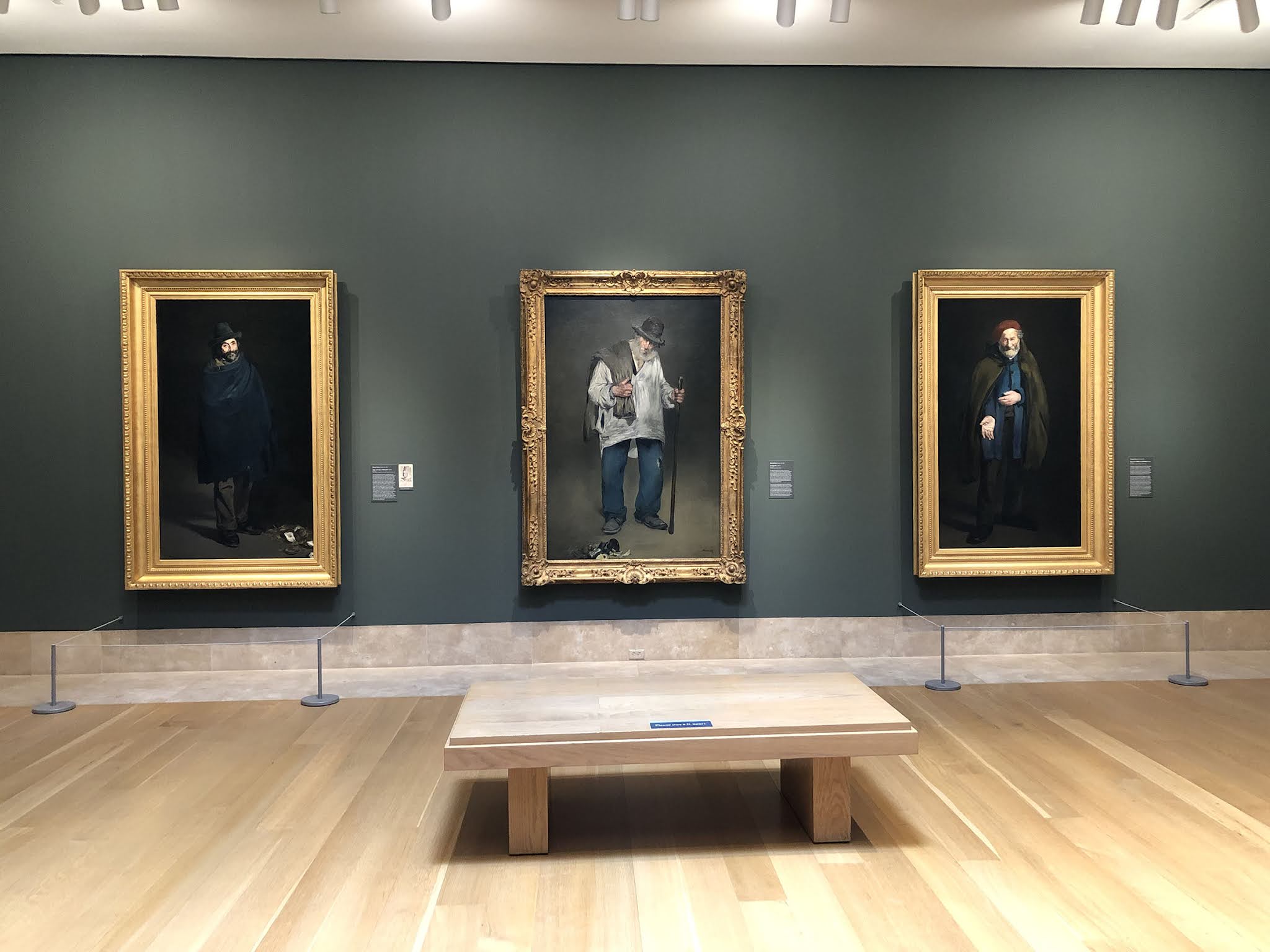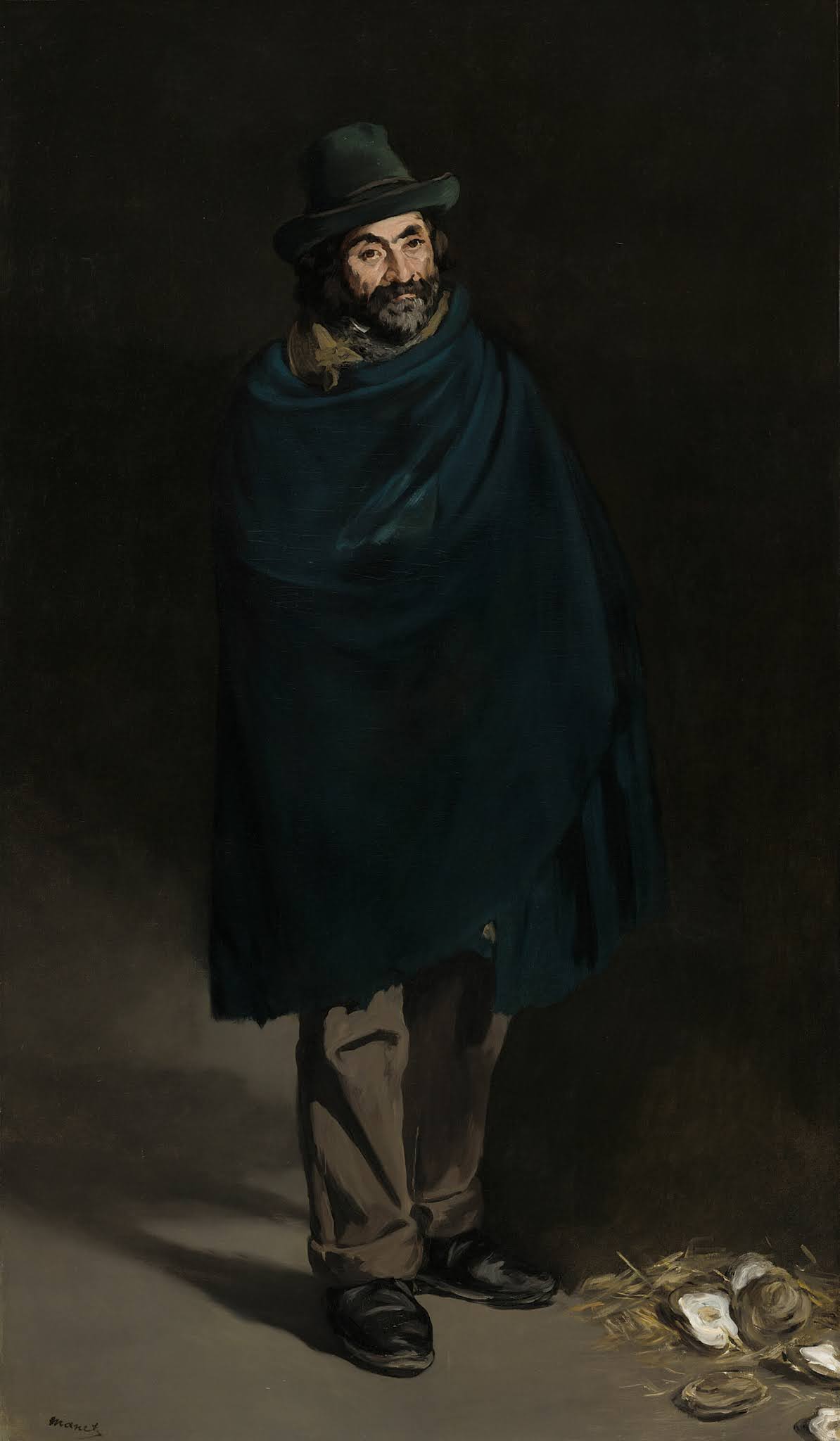Manet's Street Art at the Norton Simon
 |
The Norton Simon Museum has brought together three of Manet's "Four Philosophers," full-length portraits of Parisian street people. One is from the NSM collection, and the other two are on loan from the Art Institute of Chicago (through Feb. 28, 2022). It's the first time the three have been shown together in 55 years.
About 1859 Manet created his first truly original painting, The Absinthe Drinker. It was a full-length portrait of Collardet, an alcoholic ragpicker who frequented the streets around the Louvre. The painting was rejected by the Salon and by Manet's teacher, Thomas Couture ("My poor friend, you are the absinthe drinker!" he said).
In 1865 Manet traveled to Spain and found a better teacher in Velázquez's paintings at the Prado. He saw the Spanish artist's two imaginary portraits of ancient Greek thinkers Aesop and Menippus. Velázquez imagined them as schlubs more interested in intellect than appearance.
The first-hand experience of Velázquez inspired Manet to create three more full-lengths of Parisian street people, now in a more assured style. In 1872 Manet sold the three, along with the earlier Absinthe Drinker, to dealer Paul Durand-Ruel as a series of "philosophers."
 |
| Édouard Manet, Beggar with Oysters (Philosopher), 1865-67. Art Institute of Chicago |
The subjects of the two Chicago paintings are identified as beggars. The Absinthe Drinker (in Copenhagen and not in this show) and the NSM painting show ragpickers, which was something else again. A ragpicker was an urban recycler, something like the freelance Angelenos who go through blue trash containers. In 19th-century Paris, however, ragpicking was a licensed and regulated trade. Though the working poor had long been romanticized, ragpickers had a reputation as refuseniks of the inequalities of urban life.
 |
| Small detail of Manet's The Ragpicker, 1865-70. Norton Simon Museum |
It's not clear how Manet intended us to view his subjects. Velázquez's philosophers look like bums, but they were famous thought leaders. By grandly portraying humble street people, Manet seems to intend some irony, even if it's an irony that society and not the artist has created. Linda Nochlin found the Simon Ragpicker "formally distanced, almost set in quotation marks." The Ragpicker and one Chicago painting reference economic inequality with still lifes of upper-crust detritus: oyster shells and a broken champagne bottle with lemon peels.
The philosophers hold court in a room with the museum's two other Manet paintings and early works by artists who would later be tagged as Impressionists. All three of the Simon's Manet paintings have undergone conservation treatment at the Getty in the past few years. The NSM's unfinished portrait of Madame Manet has had a real makeover. The once-dingy background is now a luminous gray, and Madame's understated colors scintillate. This is Manet looking not back to the Baroque but to his contemporary, Berthe Morisot.
 |
| Édouard Manet, Madame Manet, 1874-76. Norton Simon Museum |
Comments
I assume you mention "The Absinthe Drinker" (1859) because it is received as the 4th of the "Philosophers." Pity the Glyptoteket in Copenhagen couldn't release it.